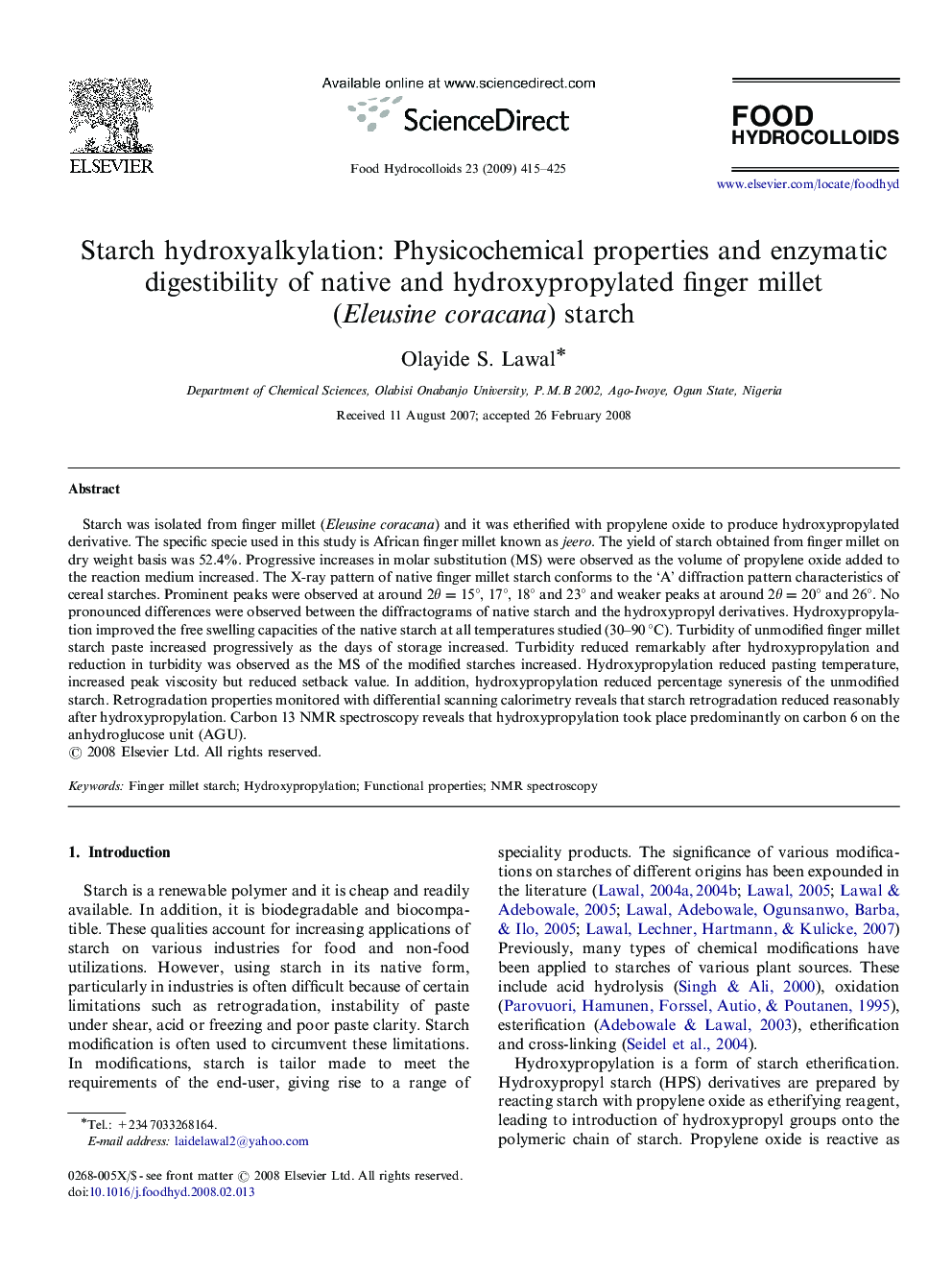| کد مقاله | کد نشریه | سال انتشار | مقاله انگلیسی | نسخه تمام متن |
|---|---|---|---|---|
| 604955 | 880329 | 2009 | 11 صفحه PDF | دانلود رایگان |

Starch was isolated from finger millet (Eleusine coracana) and it was etherified with propylene oxide to produce hydroxypropylated derivative. The specific specie used in this study is African finger millet known as jeero. The yield of starch obtained from finger millet on dry weight basis was 52.4%. Progressive increases in molar substitution (MS) were observed as the volume of propylene oxide added to the reaction medium increased. The X-ray pattern of native finger millet starch conforms to the ‘A’ diffraction pattern characteristics of cereal starches. Prominent peaks were observed at around 2θ=15°, 17°, 18° and 23° and weaker peaks at around 2θ=20° and 26°. No pronounced differences were observed between the diffractograms of native starch and the hydroxypropyl derivatives. Hydroxypropylation improved the free swelling capacities of the native starch at all temperatures studied (30–90 °C). Turbidity of unmodified finger millet starch paste increased progressively as the days of storage increased. Turbidity reduced remarkably after hydroxypropylation and reduction in turbidity was observed as the MS of the modified starches increased. Hydroxypropylation reduced pasting temperature, increased peak viscosity but reduced setback value. In addition, hydroxypropylation reduced percentage syneresis of the unmodified starch. Retrogradation properties monitored with differential scanning calorimetry reveals that starch retrogradation reduced reasonably after hydroxypropylation. Carbon 13 NMR spectroscopy reveals that hydroxypropylation took place predominantly on carbon 6 on the anhydroglucose unit (AGU).
Journal: Food Hydrocolloids - Volume 23, Issue 2, March 2009, Pages 415–425